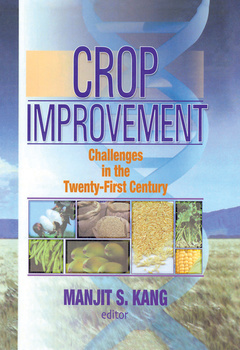Description
Crop Improvement
Challenges in the Twenty-First Century
Author: Kang Manjit S.
Language: English
Subjects for Crop Improvement:
390 p. · 15.2x21.2 cm · Paperback
Description
/li>Contents
/li>Readership
/li>Biography
/li>
Learn to integrate molecular genetic techniques with traditional plant breeding methods!This comprehensive book provides the latest authoritative scientific information on improvement of both temperate and tropical crops. Crop Improvement: Challenges in the Twenty-First Century brings together expert plant breeders and geneticists to address issues related to crop adaptability and stability across environments for important food and fiber crops. It emphasizes the need to integrate molecular genetic techniques with traditional plant breeding methods to develop hardier, more productive crops. Crop Improvement includes the latest research on physiological and biochemical responses of plants to drought and heat stress, which should help breeders develop effective strategies for improving resistance to abiotic stresses. In addition, this helpful book elucidates the use of mixed models and best linear unbiased prediction. To make the book comprehensive, chapters discuss stability analysis in crop performance trials and genotype-by-environment interactions.Crop Improvement includes detailed information on breeding specific crops, including:
- rice
- tropical maize
- sorghum
- common bean
- sugar beet
- bananas and plantain
- cotton
Crop Improvement offers both practical information and up-to-date research. It also suggests a vision of new directions and partnerships that are expected to evolve in this century. This book is an essential resource for practicing plant breeders and geneticists at universities, government agencies, and industry. It should also be of use to teachers and students engaged in crop breeding.




